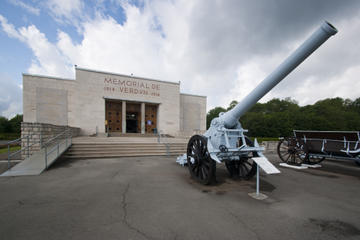
Verdun
Northeast France isn't a regular tourist destination -- most visitors don't venture past Reims, with its gorgeous cathedral and Champagne culture. But just a bit farther east is a city worth visiting, one that is well-known among World War I buffs: Verdun.
Founded by the Celtic Gauls more than 2,000 years ago, Verdun is located on the River Meuse near the borders of Belgium, Luxembourg and Germany. It was the site of the longest and most brutal battle of World War I, the Battle of Verdun, which raged through most of 1916. The German and French sides suffered a combined 700,000 casualties, and although the French won, the victory was seen as a blight on the war because of the sheer number of soldiers wounded, lost or dead. The losses were ultimately deemed unnecessary.
The battlefield, which is only six square miles, can still be visited today. There are also several cemeteries and memorials in the area around Verdun where people from around the world can pay their respects to the fallen. The most visited is the Douaumont ossuary, a tribute to the soldiers who lost their lives. Although moving, the ossuary is not for the faint of heart; there are piles of actual human bones throughout the structure.
However, the museum itself is astounding, and both the monument and the cemetery of more than 16,000 graves are must-see attractions for those looking to gain perspective on the scale of what soldiers from both sides darkly nicknamed "The Hell of Verdun."
Practical Info
The ossuary is located in Douaumont off route D913, and it is closed from Christmas Day through Valentine's Day each year. In February and March, it is open from 9 a.m. to noon and from 2 p.m. until 5 p.m. During the rest of the year, it is open from 9 a.m. until 6 p.m. on weekdays and from 10 a.m. to 6 p.m. on weekends. The cost per adult is 6.00€, with discounts for children, students, seniors and service-persons in uniform.
